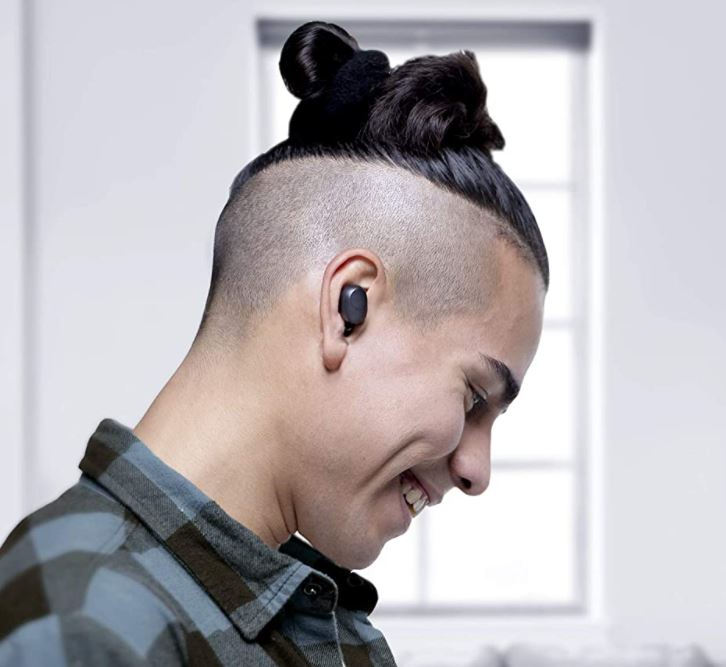When you’re shopping for headphones or earbuds, you often see a lot of features thrown around. Manufacturers will advertise “QC 3.0 charging” or “CVC 8.0 noise isolation” without much explanation. If you’re already an expert, all of this is just fine and dandy. But if you’re an average consumer doing a little window shopping, it can be confusing. You just wanted to buy a pair of earbuds, and now you’re doing a bunch of research.
We get it. And while we can’t explain everything in a single article, we can clear up a little confusion. Today, we’ll take a deeper dive into one of those many features you’re always seeing. Many newer earbuds, including the newer AirPods Pro and Max, include a “transparency mode.” Other manufacturers sometimes use different terms, but the underlying principle is the same. In transparency mode, your earbuds let more noise in instead of blocking more noise out. At first, this might sound like a silly idea. People spend a small fortune on noise-cancelling headphones specifically to tune out the world. Why would you want to let more noise in?
In fact, there are several reasons. Maybe you’re sitting around at home, and you think you might hear the phone ringing. Maybe you’re in an airport, and you’re waiting to hear an announcement about your flight. Maybe you’re popping into Starbucks for a coffee and need to interact with the barista for a few seconds. The point is, you don’t always want to be in your own personal sound bubble.
So, how does it work? To answer that question, we’ll first need to look at the underlying ANC technology. Once we understand how that works, understanding transparency mode will be easy.

How ANC Works
Active Noise Cancellation (ANC) is designed to eliminate background noise while you’re listening to music. It works by monitoring the outside noise with microphones. Then, a dedicated ANC chip generates inverse sound waves that cancel out the noise. This might sound like some kind of voodoo, but it’s not. Each wave has a certain amplitude. But by creating a wave of the same frequency and opposite amplitude, you can neutralize it. Think of it like adding 10 and -10. You combine them, and you get zero.
The principle is straightforward, but the engineering can be different depending on the buds. There are three types of ANC: feedforward, feedback, and hybrid. Let’s take a quick look at each method, and its strengths and weaknesses.
Feedforward ANC
Feedforward ANC works by using microphones located on the outside of the ear cup or buds. The noise reaches the outer mics before it reaches your ear, so the ANC chip has plenty of time to react. This makes feedforward ANC ideal for higher frequencies, up to as high as 2kHz.

That said, a feedforward setup has a couple of distinct disadvantages. To begin with, because the mics are on the outside, they can’t hear the anti-noise the ANC chip generates. This means they have no way to monitor or correct for their own performance. If the anti-noise isn’t working for some reason, they’ll just keep on doing the wrong thing. Moreover, while feedforward ANC works very well for high frequencies, it’s not as effective for lower ones. This can be problematic if you’re on a plane or a train and don’t want to hear the engine. Finally, outside mics can be vulnerable to wind noise, and correct for noises they don’t need to.
Feedback ANC
In a feedback ANC setup, the mic is inside the ear cup, or inside your ear if it’s on an earbud. This allows the mic to monitor the speaker as well as the noise. As a result, it has the ability to react and respond to any errors in the ANC chipset. It’s also somewhat more accurate. Instead of compensating for all outside noise, it’s compensating only for noise that actually reaches your ears. It also works better for low frequencies like engine rumble.
On the downside, feedback ANC can’t deal as well with high-frequency sounds. If you’re dealing with a lot of high-pitched noise, you’ll want a different setup. Moreover, good feedback ANC is more expensive to produce. The reason is that the mics will also pick up whatever you’re listening to. So the chip has to distinguish between desirable and undesirable noise, rather than just blocking everything.

Hybrid ANC
As you may have guessed, hybrid ANC systems use a combination of both inside and outside noise. This gives you the best of both worlds, at least in theory. Hybrid ANC headphones and earbuds can filter out both low and high frequencies. They can monitor noise both inside and outside of your ears. And they can self-correct for any errors in the anti-noise.
That said, you can’t just assume that hybrid ANC equipment is automatically going to be better. It still needs to be well-engineered. A badly-designed hybrid ANC system can generate unwanted white noise that distorts your music. In addition, cheap mics can cause poor performance regardless of what ANC system you’re using. Finally, keep in mind that hybrid ANC equipment requires twice as many mics as other systems. This means you can expect to pay a correspondingly higher price. If you see a cheap pair of hybrid ANC buds or headphones, steer clear.

Benefits of ANC
Regardless of what type of ANC headphones or earbuds you’re using, you get similar benefits. If you’re on a plane or a train, you can block out the engine noise. If you’re walking around town, you can filter out loud traffic. And if you’re in any kind of crowded space, you can drown out the crowd noise. Basically, you can enjoy your favorite music or podcasts without being bothered by anyone else.
That said, ANC technology is not without its drawbacks. To begin with, it consumes significantly more battery life. If you’re not going to be able to charge for a while, you may want to switch ANC off and deal with the noise. Another situation where ANC isn’t ideal is when you actually need to hear your surroundings. That’s where transparency mode comes in.
If you want a pair of earbuds with transparency mode, there are plenty of options. The Mpow X3 ANC Wireless Earbuds are some of the best. The ANC is very powerful, and the transparency mode works as well as it should. The battery is also long-lasting, although the bass isn’t as powerful as some buds’.
So, What is Transparency Mode?
Based on what we’ve discussed, transparency mode might seem fairly straightforward. You press a button, and the ANC turns off, right? Not exactly. ANC earbuds and headphones already allow you to turn off the ANC function in most cases. However, this in and of itself doesn’t necessarily make it easy to hear. In earbuds with silicone tips, or headphones that cover your ears, you’re still relatively isolated. Unless someone is shouting and trying to get your attention, you’ll probably have trouble hearing. Imagine trying to talk to a bank teller with your music playing. ANC or no ANC, it’s just not going to happen.
Recall how ANC headphones work. Microphones on the outside monitor the noise so the ANC chip can generate an inverse wave. Transparency mode utilizes the microphones, but the ANC chip doesn’t interfere. Instead, the outside noise is actually played inside your headphones, along with your music. It’s as if you’re standing in a room listening to music on a stereo. You can focus on the music, or chat with the person next to you.
With transparency mode activated, you can now interact with the world. You can order a coffee or pay for your groceries without any awkwardness. You can also navigate urban areas more safely. If you’re walking around downtown, you actually want to hear engines and car horns. Those noises are important information if you don’t want to get hit by a car. Of course, you could always just take an earbud out, but that’s not generally ideal. It can be effective if you’re listening to a spoken-word podcast or an audio book. But listening to stereo music on a single earbud is an excruciating experience. With both earbuds and transparency mode, you still get to savor the full richness of the audio.

Another excellent choice of earbud are the Dyplay ANC Pods. They have ANC with transparency mode, and they also support Qi wireless charging. On the downside, they don’t have any waterproof rating, so you shouldn’t wear them outdoors in foul weather.
Final Verdict
As you can see, transparency mode is more complicated than it sounds. It’s only possible due to the development of several layers of underlying ANC technology. That said, the function is relatively straightforward from the user’s end of things. You hold down a button, and your ears are open to the world. You hold down the same button, and you go back to your blissful personal bubble. That’s all you really need to know.
Meet Ry, “TechGuru,” a 36-year-old technology enthusiast with a deep passion for tech innovations. With extensive experience, he specializes in gaming hardware and software, and has expertise in gadgets, custom PCs, and audio.
Besides writing about tech and reviewing new products, he enjoys traveling, hiking, and photography. Committed to keeping up with the latest industry trends, he aims to guide readers in making informed tech decisions.

